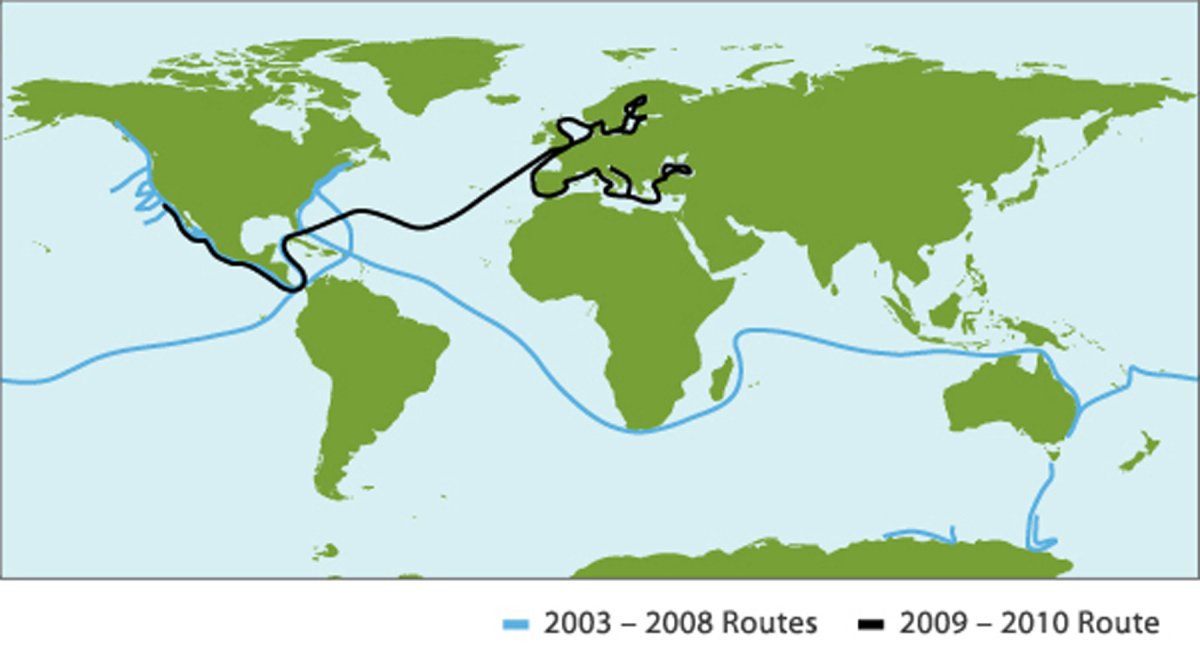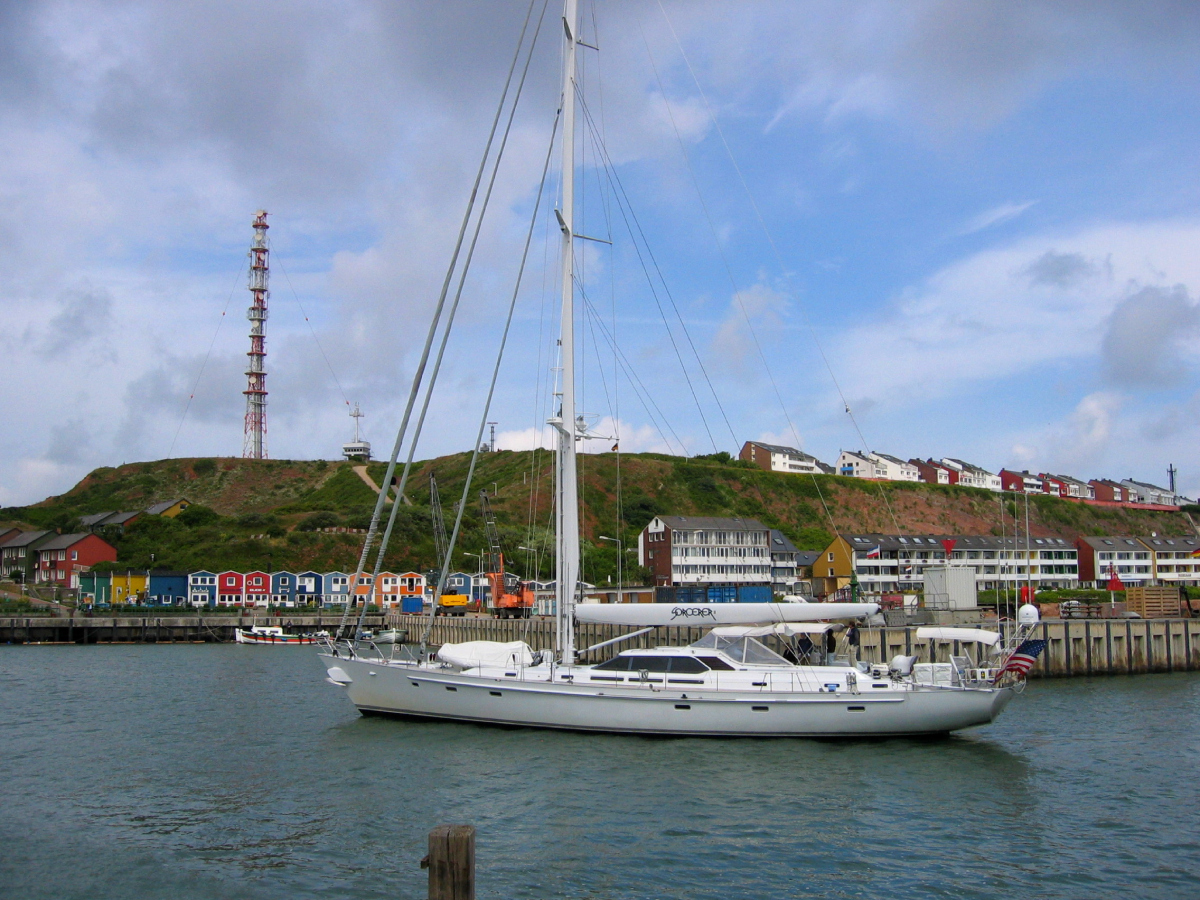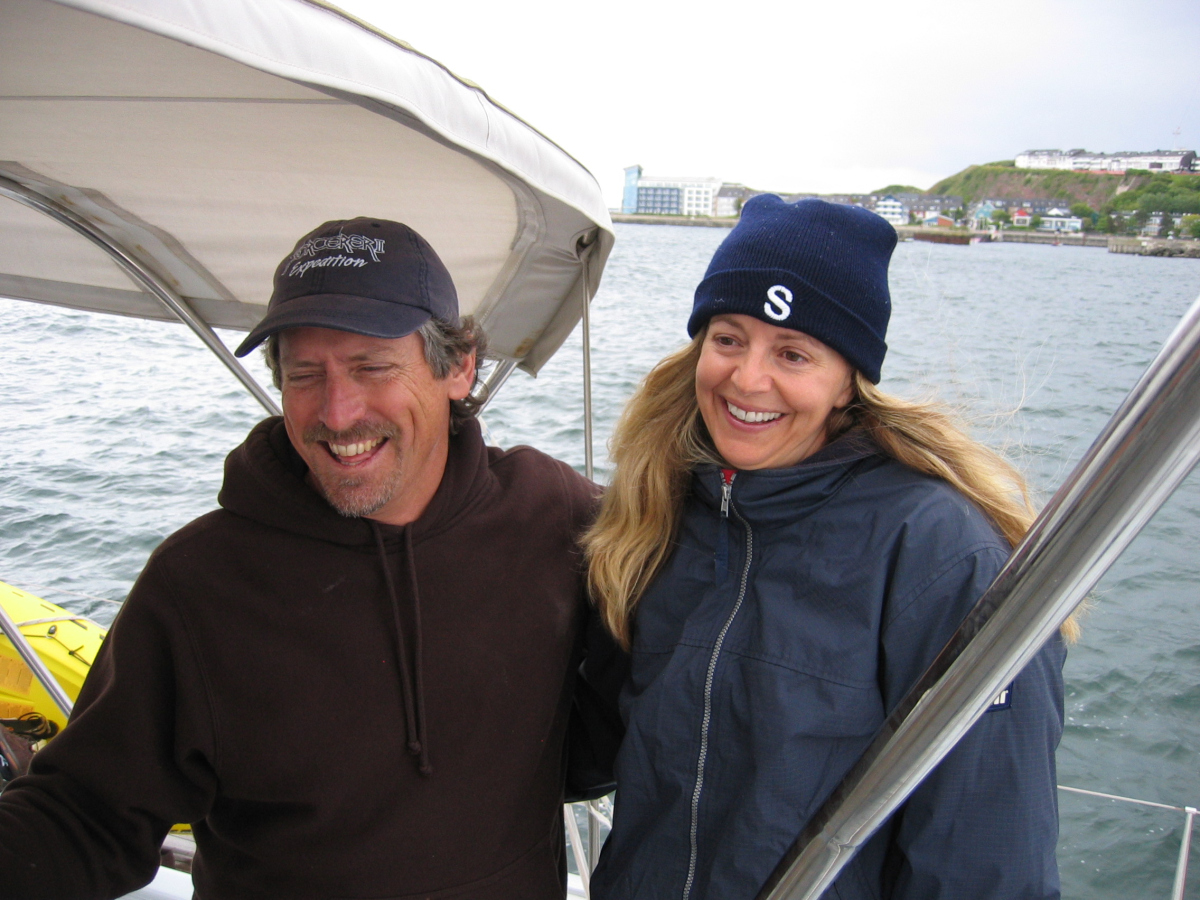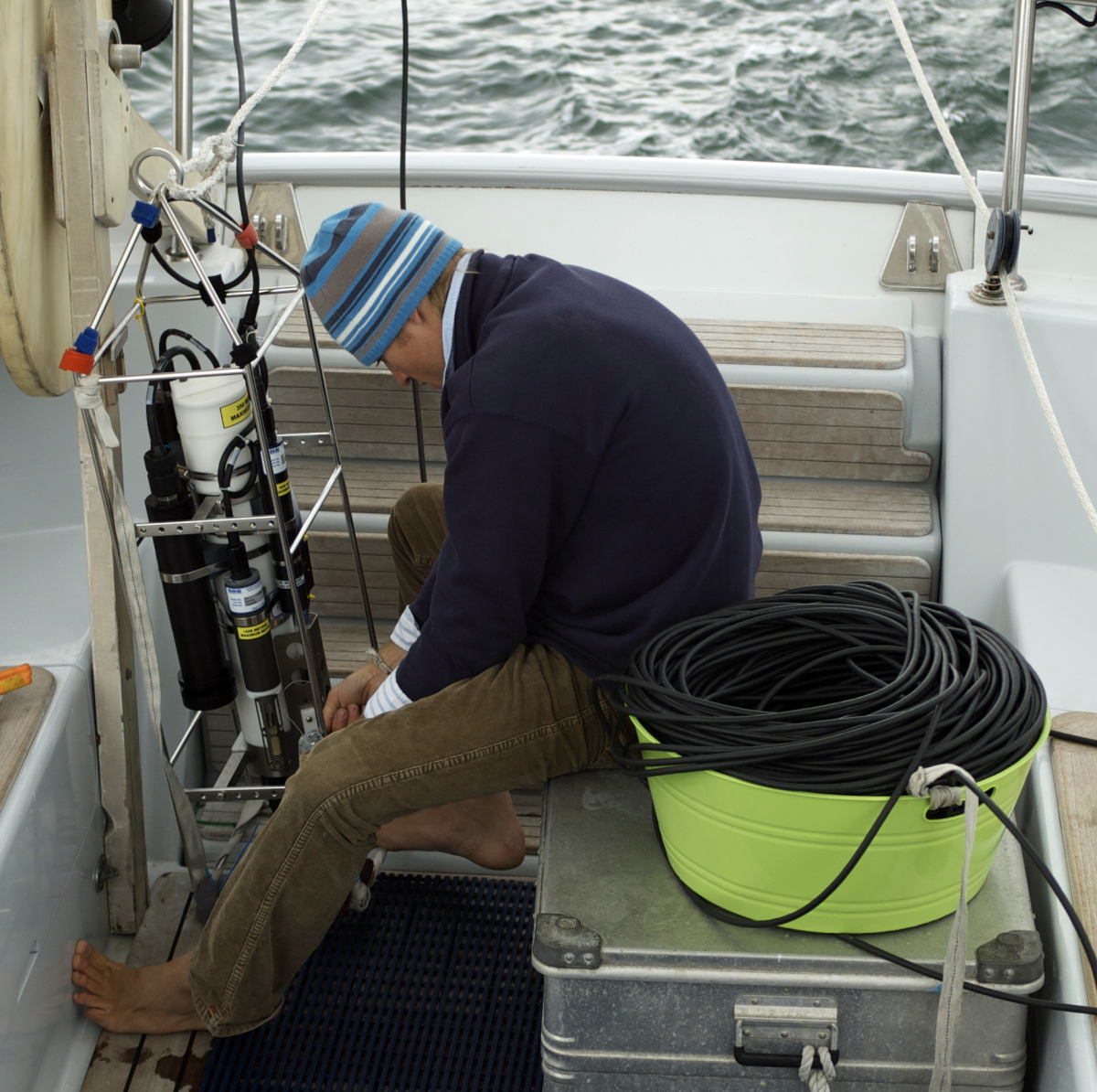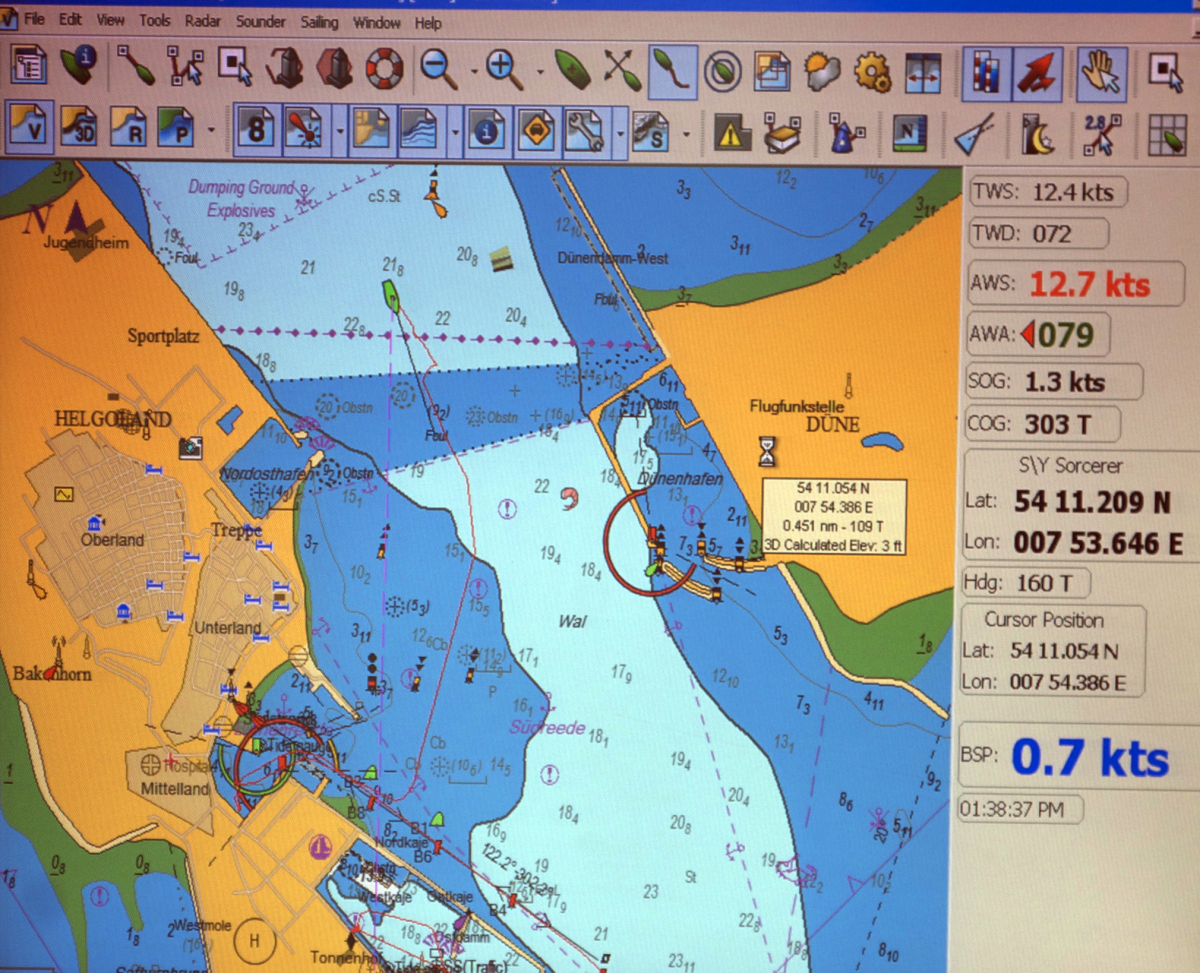Page path:
- Press Office
- Press releases 2009
- 08.06.2009 Sequencing the unseen majority in th...
08.06.2009 Sequencing the unseen majority in the World´s Oceans
Sequencing the unseen majority in the World´s Oceans
Research Sailing Yacht Sorcerer II visits Helgoland to cooperate with German marine researchers
Helgoland/ Bremen, 8 June 2009
Craig Venter´s Sailing Research Ship Sorcerer II was on a scientific visit to Helgoland in the North Sea. Sorcerer II, a 96 foot cruiser is equipped with state-of-the-art water samplers to trap microscopic life on filters for later sequencing. The crew on board collects these samples from the world´s oceans to gain a better understanding of the microscopic life and its impact on the cycles of elements. All sequence information is later deposited in a non- commercial open data bank accessible for anybody from all over the world.
Scientists from the Alfred-Wegener-Institute for Polar and Marine Research, the Biologische Anstalt Helgoland, the Jacobs University Bremen and the Max Planck Institute joined the American crew last Sunday for sampling the well studied Long Term Ecological Research Site ‘Kabeltonne’ at Helgoland Roads. All institutes are part of MIMAS (Microbial Interactions in MArine Systems), a research project involved in monitoring changes in microbial composition and function. Funding comes from the German Federal Ministry for Education and Research (BMBF).
Prof. Frank Oliver Glöckner, Head of the Microbial Genomics Group at the Max Planck Institute, is convinced that the cooperation with the US American team is of mutual benefit. „Sequence data from the Sorcerer II will complement and improve our own MIMAS data. We are excited that with the Sorcerer II data we will be enable to compare marine habitats on a global scale“, Glöckner points out.
Microbes account for roughly 50% of the Earth´s biomass and are affecting the global turnover of carbon and other key compounds like carbon dioxide and other green house gases.
Only 1% of the microbial life forms can be studied by classical cultivation based approaches. Venter´s team is after the remaining 99%. This non-profit genome project is performed in collaboration with the scientists from the countries they are visiting.
A newly developed DNA sequencing strategy, which proved successful in sequencing the Human Genome, has been adapted for sequencing an unknown number of species simultaneously. The Human genome project was accomplished with the shotgun approach, in which the genetic material is broken into random pieces which could be easily sequenced. Afterwards the pieces were stitched together using a powerful computer systems running bioinformatic programs developed specifically for this purpose.
As Craig Venter describes it, the Human Genome was like solving a puzzle with six billion pieces, this new project is like solving an unknown number of puzzles for each water sample.
This approach is quite successful: During a one year pilot study they detected 1.2 million genes and 1800 new species in marine habitats. The current sailing trip is heading for European waters of the North Sea, the Baltic, the Mediterranean and the Black Sea.
Manfred Schlösser
Research Sailing Yacht Sorcerer II visits Helgoland to cooperate with German marine researchers
Helgoland/ Bremen, 8 June 2009
Craig Venter´s Sailing Research Ship Sorcerer II was on a scientific visit to Helgoland in the North Sea. Sorcerer II, a 96 foot cruiser is equipped with state-of-the-art water samplers to trap microscopic life on filters for later sequencing. The crew on board collects these samples from the world´s oceans to gain a better understanding of the microscopic life and its impact on the cycles of elements. All sequence information is later deposited in a non- commercial open data bank accessible for anybody from all over the world.
Scientists from the Alfred-Wegener-Institute for Polar and Marine Research, the Biologische Anstalt Helgoland, the Jacobs University Bremen and the Max Planck Institute joined the American crew last Sunday for sampling the well studied Long Term Ecological Research Site ‘Kabeltonne’ at Helgoland Roads. All institutes are part of MIMAS (Microbial Interactions in MArine Systems), a research project involved in monitoring changes in microbial composition and function. Funding comes from the German Federal Ministry for Education and Research (BMBF).
Prof. Frank Oliver Glöckner, Head of the Microbial Genomics Group at the Max Planck Institute, is convinced that the cooperation with the US American team is of mutual benefit. „Sequence data from the Sorcerer II will complement and improve our own MIMAS data. We are excited that with the Sorcerer II data we will be enable to compare marine habitats on a global scale“, Glöckner points out.
Microbes account for roughly 50% of the Earth´s biomass and are affecting the global turnover of carbon and other key compounds like carbon dioxide and other green house gases.
Only 1% of the microbial life forms can be studied by classical cultivation based approaches. Venter´s team is after the remaining 99%. This non-profit genome project is performed in collaboration with the scientists from the countries they are visiting.
A newly developed DNA sequencing strategy, which proved successful in sequencing the Human Genome, has been adapted for sequencing an unknown number of species simultaneously. The Human genome project was accomplished with the shotgun approach, in which the genetic material is broken into random pieces which could be easily sequenced. Afterwards the pieces were stitched together using a powerful computer systems running bioinformatic programs developed specifically for this purpose.
As Craig Venter describes it, the Human Genome was like solving a puzzle with six billion pieces, this new project is like solving an unknown number of puzzles for each water sample.
This approach is quite successful: During a one year pilot study they detected 1.2 million genes and 1800 new species in marine habitats. The current sailing trip is heading for European waters of the North Sea, the Baltic, the Mediterranean and the Black Sea.
Manfred Schlösser
Contact
Prof. Frank Oliver Glöckner
Head of the Microbial Genomics Group
Max Planck Institute for Marine Microbiology
[Bitte aktivieren Sie Javascript]
Dr. Manfred Schlösser
Press officer of the Max Planck Institute for Marine Microbiology
+49 421 2028704
[Bitte aktivieren Sie Javascript]
Further information
Max Planck Insttitute for Marine Microbiology www.mpi-bremen.de
Alfred Wegener Institute for Polar and Marine Research www.awi.de
Sorcerer Expedition www.sorcerer2expedition.org
J. Craig Venter Institute www.jcvi.org/ and www.jcvi.org/cms/research/projects/gos/overview/
Prof. Frank Oliver Glöckner
Head of the Microbial Genomics Group
Max Planck Institute for Marine Microbiology
[Bitte aktivieren Sie Javascript]
Dr. Manfred Schlösser
Press officer of the Max Planck Institute for Marine Microbiology
+49 421 2028704
[Bitte aktivieren Sie Javascript]
Further information
Max Planck Insttitute for Marine Microbiology www.mpi-bremen.de
Alfred Wegener Institute for Polar and Marine Research www.awi.de
Sorcerer Expedition www.sorcerer2expedition.org
J. Craig Venter Institute www.jcvi.org/ and www.jcvi.org/cms/research/projects/gos/overview/
6) From left to right: Setting up the CTD. Skipper Charly Howard. Discussing the results (Source Max Planck Institute for Marine Microbiology).
7) From left to right: Setting up the filtration device. Prof. Frank Oliver Glöckner on board of Sorcerer II. (Source Max Planck Institute for Marine Microbiology).
1) Expedition Route of Sorcerer II (Source www.jcvi.org). Starting on 19 March 2009 in San Diego the crew headed by skipper Charly Howard visited Plymouth and is now on its way to the Baltic Sea. The expedition is the third research trip scheduled from 2009 to 2010.
2) The Sorcerer II in Helgoland (Source Max Planck Institute for Marine Microbiology)
3) Skipper Charly and crew member Sarah. The crew gave the German researchers a warm welcome on board. (Source Max Planck Institute for Marine Microbiology)
4) Jeremy is preparing the CTD for measuring the oxygen and chlorophyll concentration in the water column (Source Max Planck Institute for Marine Microbiology)
5) The sampling site ‘Kabeltonne’ is located between the main island and the Dune. This field site is well monitored for decades by German marine scientists. (Source Max Planck Institute for Marine Microbiology)







